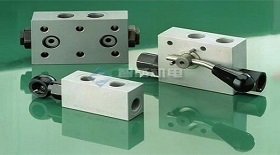Several integration methods of hydraulic control valves
Hydraulic Exhibition will open. Let us learn about hydraulic control valves.
There are many control valves in a hydraulic system that can be connected or integrated in different ways. Hydraulic control valves can be divided into tube integration and tubeless integration.
Pipe integration is the earliest integration method. It integrates all tubular connection hydraulic control valves with pipe fittings (pipes and joints). The main advantage is that the connection mode is simple, and there is no need to design and manufacture oil circuit boards or oil blocks. The disadvantage is that when there are more control elements in the system, more pipes and pipe joints are required, which are crossed up and down, crisscrossed and occupied more space, so that the system layout is quite inconvenient, the installation, maintenance and fault diagnosis are difficult. When the system is running, the pressure loss is large, and it is easy to leak into the air and vibration, noise and other undesirable phenomena. This integration method is only used in simpler hydraulic systems and some walking machinery.
The tubeless connection is to fix the hydraulic control elements on a special or general auxiliary connector, which has a series of oil passages. The oil passages between the hydraulic control elements are realized by these oil passages. According to the different forms of auxiliary connectors, tubeless integration can be divided into plate type, block type, chain type, superimposed valve type, cartridge type and composite integration composed of these integration modes.
Their common characteristics are: oil line sits directly on auxiliary parts or hydraulic valve body, eliminating a large number of pipe fittings, compact structure, convenient assembly, neat and beautiful appearance, flexible installation position, short oil channel, less pressure loss and not easy to leak.



